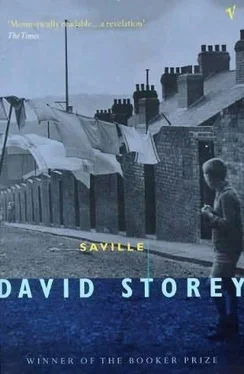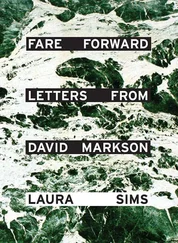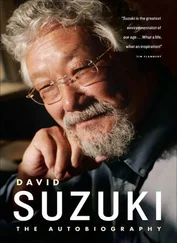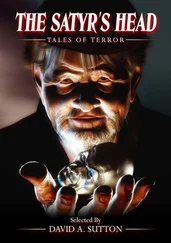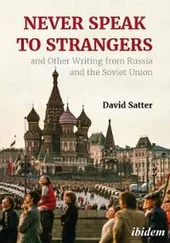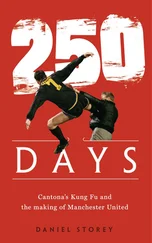David Storey - Saville
Здесь есть возможность читать онлайн «David Storey - Saville» весь текст электронной книги совершенно бесплатно (целиком полную версию без сокращений). В некоторых случаях можно слушать аудио, скачать через торрент в формате fb2 и присутствует краткое содержание. Жанр: Современная проза, на английском языке. Описание произведения, (предисловие) а так же отзывы посетителей доступны на портале библиотеки ЛибКат.
- Название:Saville
- Автор:
- Жанр:
- Год:неизвестен
- ISBN:нет данных
- Рейтинг книги:5 / 5. Голосов: 1
-
Избранное:Добавить в избранное
- Отзывы:
-
Ваша оценка:
- 100
- 1
- 2
- 3
- 4
- 5
Saville: краткое содержание, описание и аннотация
Предлагаем к чтению аннотацию, описание, краткое содержание или предисловие (зависит от того, что написал сам автор книги «Saville»). Если вы не нашли необходимую информацию о книге — напишите в комментариях, мы постараемся отыскать её.
The Man Booker Prize
Set in South Yorkshire, this is the story of Colin's struggle to come to terms with his family – his mercurial, ambitious father, his deep-feeling, long-suffering mother – and to escape the stifling heritage of the raw mining community into which he was born. This book won the 1976 Booker Prize.
Saville — читать онлайн бесплатно полную книгу (весь текст) целиком
Ниже представлен текст книги, разбитый по страницам. Система сохранения места последней прочитанной страницы, позволяет с удобством читать онлайн бесплатно книгу «Saville», без необходимости каждый раз заново искать на чём Вы остановились. Поставьте закладку, и сможете в любой момент перейти на страницу, на которой закончили чтение.
Интервал:
Закладка:
In the third drawing a group of aeroplanes were shown flying together. A swastika had been carefully inscribed on each wing, on each fuselage and on each tail. This group was confined almost exclusively to the right-hand side of the picture and a trail of black dots beyond them suggested that there were still many more to come. To the left of the picture, and by far the largest shape in it, was the bomber. It was flying, as a large, shaded-in arrow indicated, at a height a little above that of the aircraft approaching from the right. The round emblem of the Royal Air Force had been inscribed on its tail, on its fuselage and on both wings, while, from the bottom edge of the paper, the beams of numerous searchlights stood up like blades of grass.
Beneath the aircraft itself was slung the bomb, dangling on the end of the chain, on its side too the round emblem of the Royal Air Force and a message which said in capital letters, ‘THIS IS FOR YOU, ADOLF’. A series of notes and arrows indicated that it had been lowered to the precise height of the approaching aircraft.
The fourth drawing suffered more than any of the others from corrections, the bomb itself having been drawn in various positions before it had arrived at its final situation almost touching the nose of the nearest aircraft from which the faces of several Germans, each wearing a swastika on his arm, could be seen anxiously peering out.
The fifth drawing was taken up entirely by the subsequent explosion. Flames and jagged pieces of metal had been flung in every direction, while around the edges of the conflagration sections of tails and wings and disembodied pieces of fuselage could be seen falling to the ground. Several notes in the margin confirmed the effectiveness of the explosion, indicating not only the number of aircraft destroyed but the number of enemy airmen killed and the number of bombs exploded in the bomb-bays. The last drawing provided additional confirmation of this for from a clear sky a dozen or more aircraft could be seen hurtling towards the earth, flames licking at every surface, black plumes of smoke spiralling from their shattered frames in an elaborate pattern of swirls, curls and volutes. Flying above, close to the upper edge of the picture, was the solitary bomber responsible for all this destruction, bearing the insignia of the Royal Air Force on its fuselage and tail, the chain still dangling beneath it, while from its cockpit had emerged a hand, as large as the tail-plane itself, with its forefinger and second finger upraised, amidst numerous erasures, in the signal of the Victory V.
His father sent off the drawings in a brown envelope with the address printed in the same black crayon on both sides. At the top of the envelope he wrote the word ‘Private’ then, shortly before he took it into the village to post, he crossed it out and wrote instead ‘Of Utmost Concern’, practising the words first on a piece of paper.
A little later, when he had given up hope of any reply and had begun to copy out the drawings again with a bigger bomb and even more aircraft falling, the envelope already prepared and marked in red ink ‘Urgent!!’, he received a letter with an official address printed across the top and a typed message underneath indicating that the drawings were receiving attention.
For several days running he took the letter to work, bringing it back each morning a little dirtier and more heavily creased, in the evenings taking it along the backs with various copies of the drawings, stopping at the doors and explaining to Mr Shaw, to Mr Stringer, to Mr Reagan and Mr Bletchley, and even on one occasion to Mr Batty, the principles on which his invention worked. The following week he brought home a fresh pad of paper from the pit office and began to draw a second invention, suspending in this instance not one bomb but several beneath the aircraft, at varying height, like bait swinging from a row of hooks.
The culmination of this design was a drawing which occupied the entire surface of the kitchen table. Several squared sheets had been glued end to end, their edges crinkly and embellished with thumb prints, and on the single sheet, with a great deal of groaning, his face flushed, his tongue almost permanently protruding, he drew a flotilla of aircraft with an assortment of bombs strung out beneath them, some of the bombs, because of their size, carried by two or more aircraft with ‘THIS IS FOR YOU, FRITZ’ printed on the side.
After he had posted it, folded in a neat parcel and sealed with red wax, he turned his attention to several other designs which this recognition of his efforts had suddenly encouraged. As time passed and no news of his inventions reached the papers, these grew in complexity and profusion, culminating in the design for a bullet which, according to his calculations, could be fired round corners. It was shaped like a ball and was flung out of a grooved barrel in such a way that it curved in flight, eventually, if it was provided with sufficient velocity, returning to the point at which it had started.
‘Won’t it kill’, his mother said, ‘the person who fires it?’
‘How can it?’ he said, irritated whenever he had to explain his inventions unduly. ‘There’s bound to be something in the way. And in any case, you can shorten the range by reducing the size of the cartridge.’
‘I see,’ she said, nodding her head and gazing down at the numerous figures, firing round house corners, that his father had drawn.
Occasionally, as the flow of inventions faltered, he would get up from the table, put his pencil down, stretch for a while before the fire, his head back, his hands clenched into fists above his head, then, making sure that his work things were ready for the evening, his shirt warming in the hearth beside his socks and his boots, his trousers and his coat hanging on a nail beside them, he would wander out on to the doorstep and light a cigarette.
From there it was only a few steps down the garden to the field where the men were playing football. And there, by the fence, he would stand smoking, his hands in his pockets, occasionally calling out, finally glancing back at the house and climbing the fence and offering a kick at the ball as it came in his direction.
Within a short while he would be standing in the centre of the field, waving his arms, calling, the cigarette still in his mouth until that moment when, laughing, the ball at his feet, he flung the cigarette out, running one way then another towards the nearest goal, shooting then calling out, ‘Goal! Goal! What did I tell you?’ His legs were slightly bowed when he ran, and they kicked out wildly whenever he lost control or the ball was taken from him, his voice calling ‘Foul! Foul!’ distinguishable from all the rest by its tone of belligerence and complaint.
Later, as it grew dark, the men would crouch down in the middle of the field. Finally, when the light faded, all that was visible was the glow from their cigarettes and the occasional flare of a match. The low murmur of their voices came through the quietness. His mother would go on to the step and call into the darkness, scarcely loud enough to hear, ‘Harry. Harry. You’ll be late for work.’
He would come in complaining, his eyes still dazed from the darkness, his elbows and knees stained green, his figure stooping impatiently by the fire as he drew on his work clothes and fastened his boots: ‘I must be a madman, going to work at this time,’ taking his bottle of tea and his tin of sandwiches which his mother had already packed in his knapsack and getting out his bike, feeling the tyres, switching on the dynamo for his lights, then calling out to the men still gathered in the darkness as he rode away.
8
Mr Reagan’s son Michael had joined Bletchley and Colin at Sunday School. He was a tall boy with a long thin face and a long thin nose. His eyes were pale blue like Mr Reagan’s. When Bletchley and he walked down the road together people laughed, the one so fat, the other so thin, Reagan apparently unnoticing but Bletchley himself walking more quickly, his knees reddening as his agitation grew. When they returned from Sunday School Reagan walked on one side of Mr Morrison and Bletchley on the other, the woman with reddened eyes walking slightly ahead or behind.
Читать дальшеИнтервал:
Закладка:
Похожие книги на «Saville»
Представляем Вашему вниманию похожие книги на «Saville» списком для выбора. Мы отобрали схожую по названию и смыслу литературу в надежде предоставить читателям больше вариантов отыскать новые, интересные, ещё непрочитанные произведения.
Обсуждение, отзывы о книге «Saville» и просто собственные мнения читателей. Оставьте ваши комментарии, напишите, что Вы думаете о произведении, его смысле или главных героях. Укажите что конкретно понравилось, а что нет, и почему Вы так считаете.
